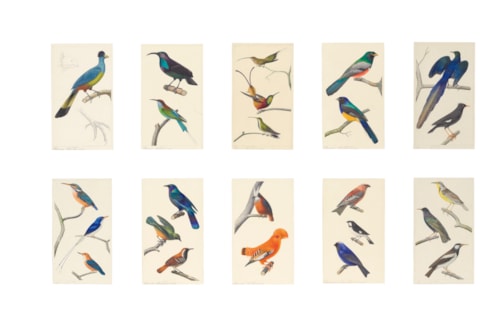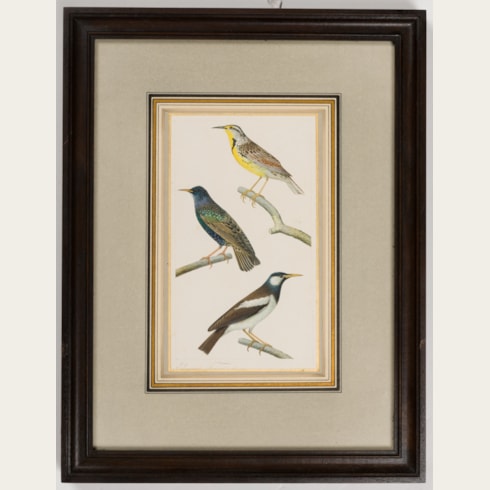Edouard TRAVIES
(Doullens 1809 - Paris 1876)
A Papuan or Australian King Parrot (Alisterus chloropterus or Alisterus scapularis) and a Monk Parakeet (Myiopsitta monachus)
Signed and dated Edouard Travies pt. 1834. in the lower margin.
170 x 100 cm. (6 3/4 x 4 in.)
Native to South America, the monk parakeet originated in Argentina and surrounding portions of Brazil and Uruguay. A small, bright green bird with a greyish face and chest, they have a harsh, screeching voice. Interestingly, it is the only member of the parrot family which builds nests from sticks and breeds colonially. With a separate entrance for each pair, a single nest can grow to be quite large; a typical structure contains up to twenty chambers, but in extreme cases they can contain as many as two hundred. Monk parakeets have created self-sustaining feral populations across the globe – including in the United States, where they were imported by the thousands as pets between the 1960s and 1980s.
This is one of sevetal draiwngs by Travies which were once part of the exceptional collection of French ornithological watercolours of the 17th, 18th and 19th centuries assembled in the 1920s and 1930s by the French industrialist and bibliophile Marcel Jeanson (1885-1942).
These watercolours by Edouard Traviès were once part of the exceptional collection of French ornithological watercolours of the 17th, 18th and 19th centuries assembled in the 1920s and 1930s by the French industrialist and bibliophile Marcel Jeanson (1885-1942). Several of these watercolours were used to illustrate Achille Richard’s Oeuvres complètes de Buffon, published in Paris in 1834, 1838 and 1845.
Provenance
Thence by descent until 1988
Jeanson sale, Monaco, Sotheby’s, 16 June 1988
Richard J. Schwartz, Upper Nyack, New York and Lyford Cay, Bahamas
Thence by descent until 2017.



















